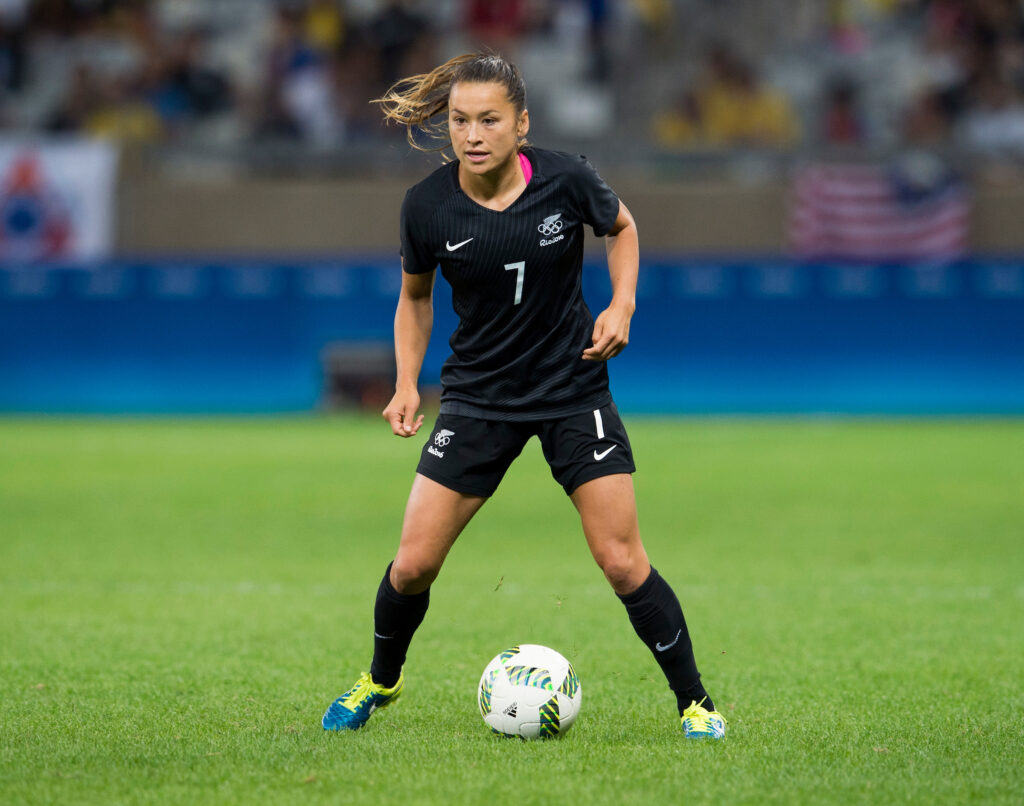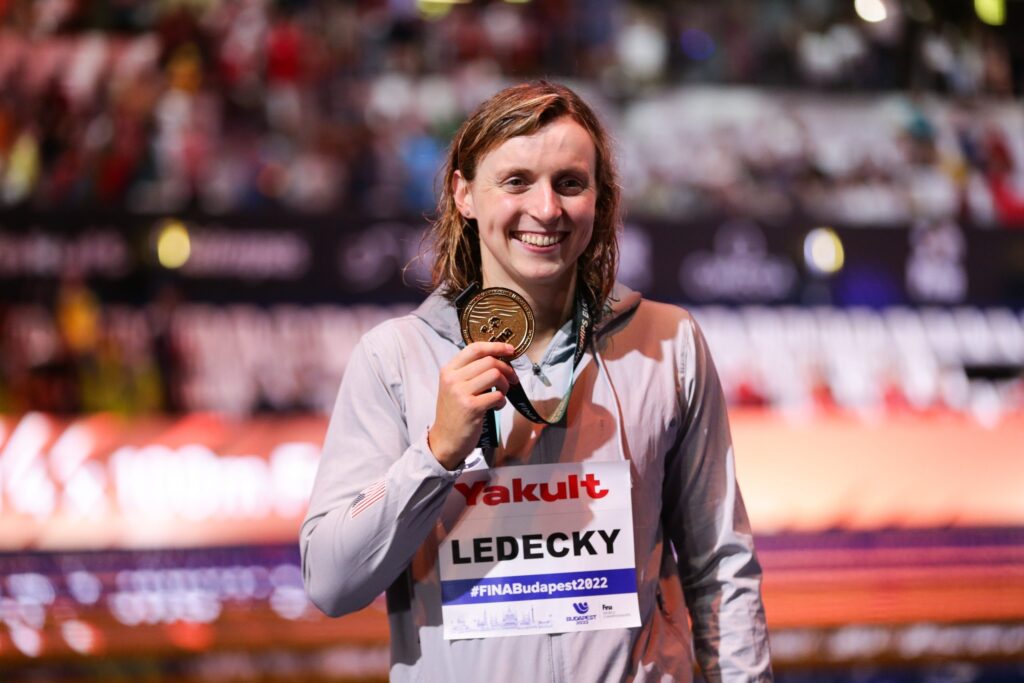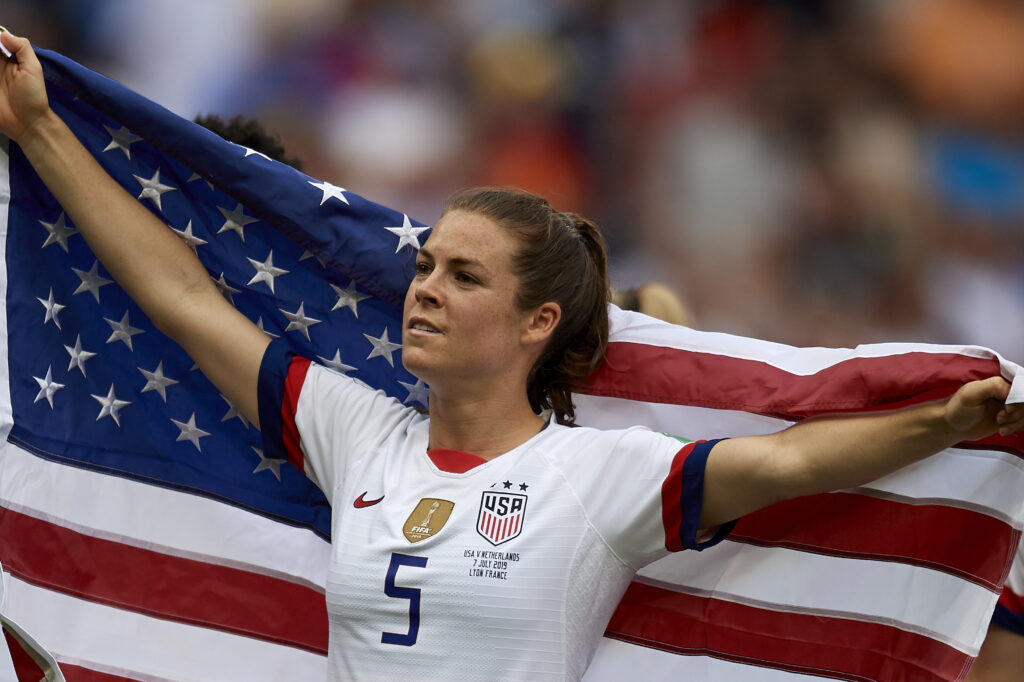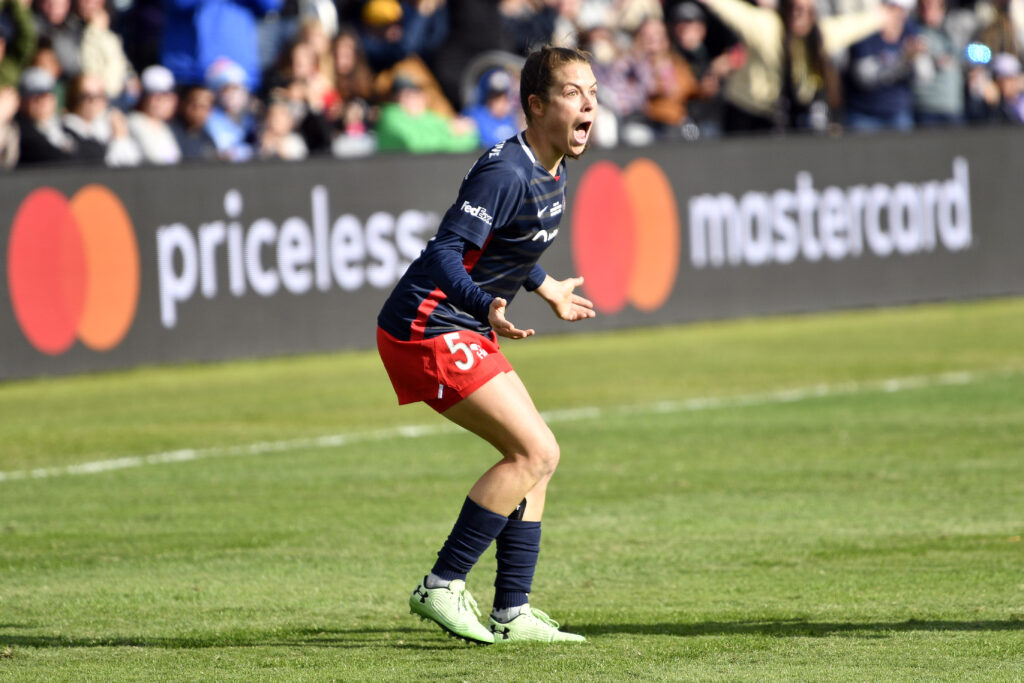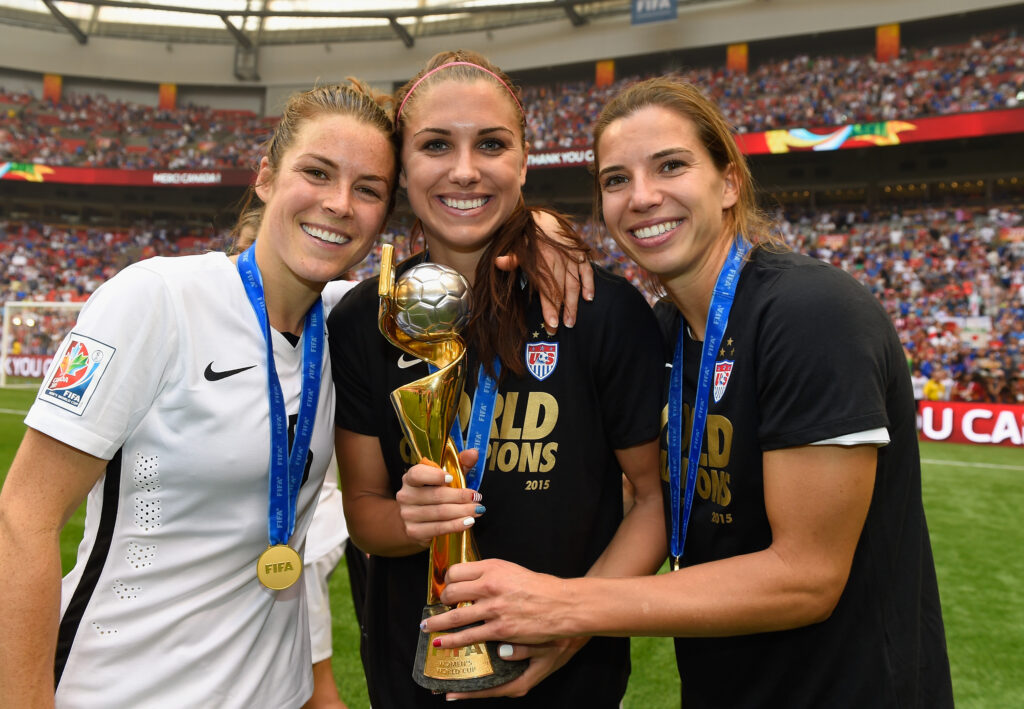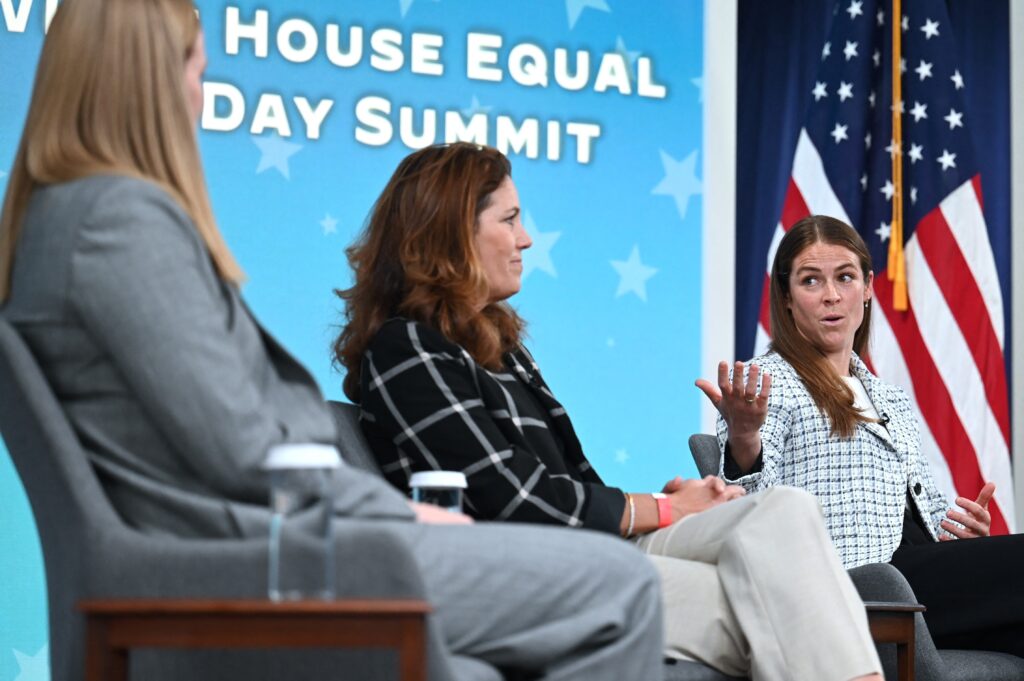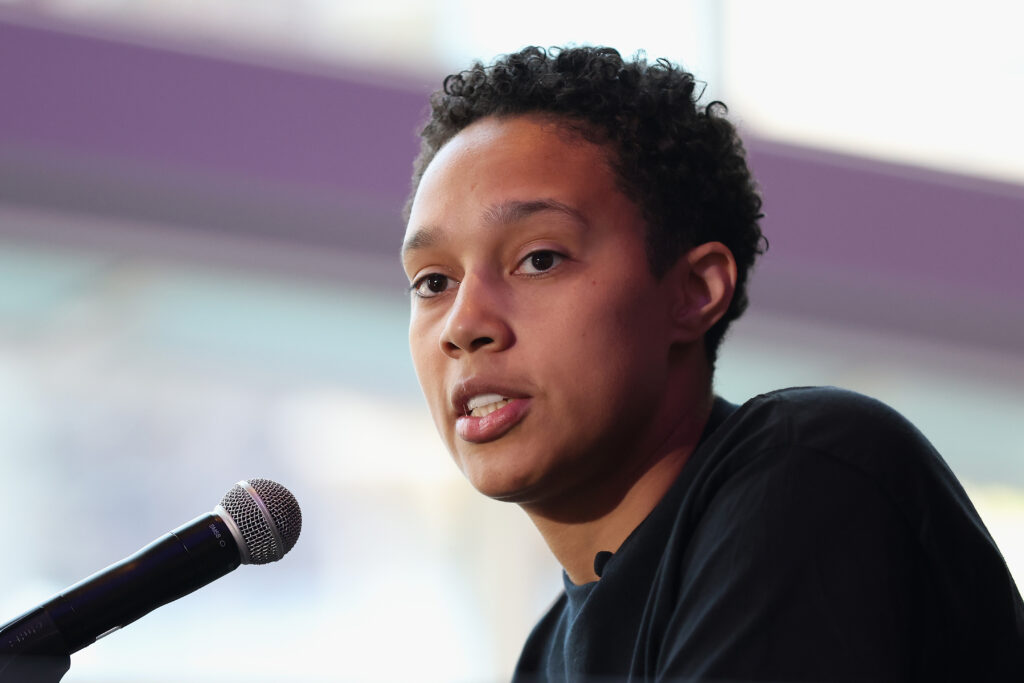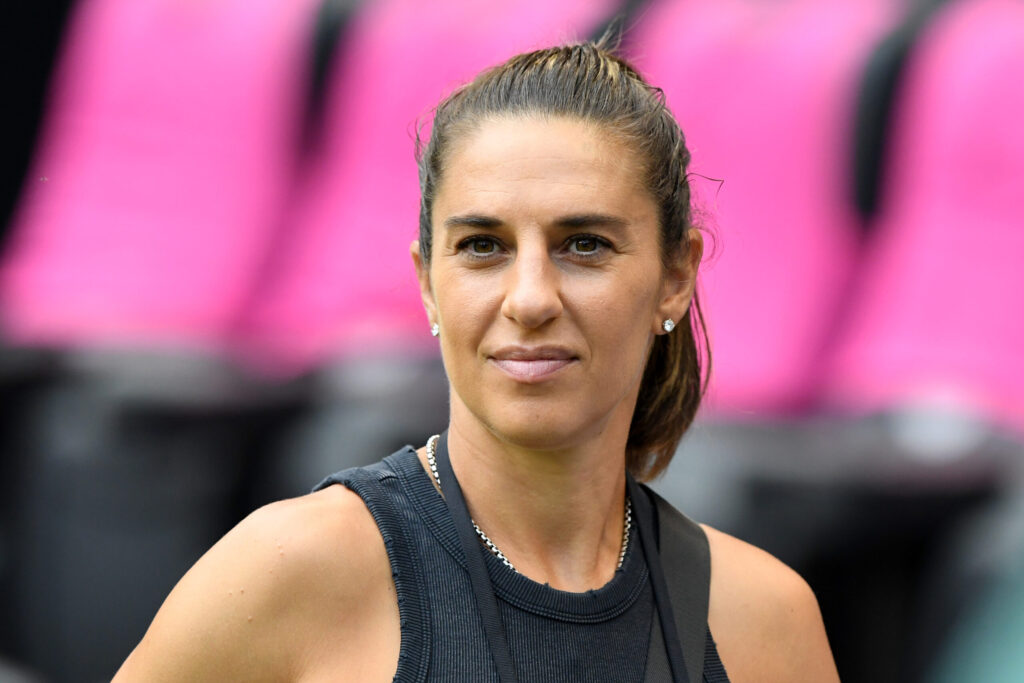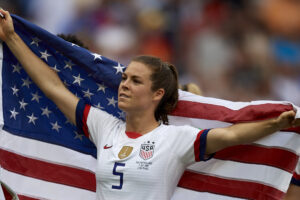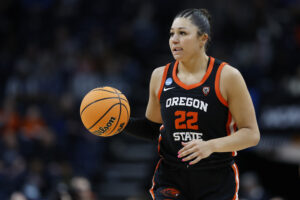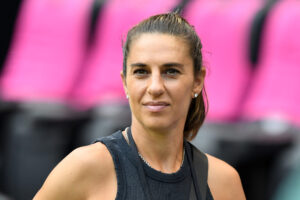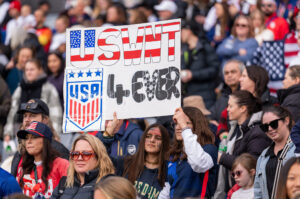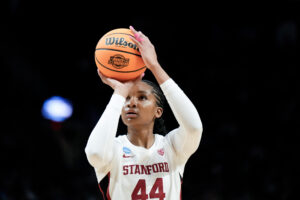After almost ten years playing abroad for FC Rosengård, Chelsea, and Bayern Munich, Ali Riley is returning to the United States as the newest member of Orlando Pride. Just Women’s Sports caught up with Riley to talk about her jetsetting decade, goals for the upcoming season, and why now is such an exciting moment for soccer in the United States.
You’ve played in the US, England, Sweden, and Germany. Can you talk a little bit about your journey?
It’s a pretty crazy story. I was drafted to play in the WPS [Women’s Professional Soccer League] out of college, almost ten years ago exactly, which is crazy. I don’t feel a day over twenty-two, so hopefully I still play that way. But when that league folded, the only opportunity I got was in Sweden with FC Rosengård. They needed a left back, so I went over there from training in Germany. I had one bag and no warm clothing. I just showed up, met this team, played a game a few days after I arrived, and then we won the Super Cup. It ended up being the most amazing thing that could’ve happened to me. FC Rosengård was an incredible team, and so I kept extending my contract, and Sweden became home.
How did you end up playing in England and Germany?
In 2018, I just felt like it was time for a change. I had a clause in my contract that I could leave, and Chelsea was interested. I went over there at the start of the English season and halfway through my last season in Sweden. But I injured my foot right as I arrived and was out for three and a half months. It ended up being plantar fasciitis, which was horrible. So though I loved the team, I never really got into a flow there. And after the World Cup, Bayern Munich needed a fullback. They saw me play and they were interested, so I had another amazing opportunity. Bayern Munich is another huge club and they were in a league that I had trained with before going to Sweden. I talked with Chelsea, and they were understanding of my situation.
Did you consider going back to Sweden?
Definitely. But I had a couple of conversations with the club in Sweden and they didn’t lead to an offer right away. Plus, after my experience in Chelsea, I was kind of like, I can handle anything. I was so hungry for a new experience, and the allure of playing at Bayern Munich was strong. The facilities, the resources, the talent on the field, the discipline, the technique – I was blown away. The facilities were built maybe two years ago, and they could compete with men’s facilities around England, at least, and I’m sure around the world. Driving in every morning gave me chills. It was so professional on the field.
The transition wasn’t perfect, though. The language was hard to pick up, and there were already two other fullbacks from the German National Team, which made it tough, but I loved the competition. Looking back, though, it was kind of a crazy decision.
So Sweden still feels like home?
Oh, yeah. I bought an apartment here. I met my partner. We want to settle down in Malmö, build our home here. We have a dog. I know Swedish. But as I was becoming more sure that Sweden is where I want to be in the future, I also started realizing that I don’t have a lot of time to see my family and friends in the US. So when Orland said they were interested, it was such amazing timing. It’s a fresh start for me at a club that wants to have a fresh start after coming last in the league last year. And there are faces that I’m very familiar with, both on the team and around the league. It just feels like it was meant to be.

Any nerves about returning to play in the US?
It’s never easy going to a new team. Even if I am American, you still feel like a little bit of an outsider. It really is like coming from overseas. I’ve gotten my Swedish passport and I have my New Zealand passport so I’m like, “Oh my gosh, I feel like a foreigner.” One thing that is always helpful is knowing someone on the team and having that comfort and family feeling. For me, Marta [Viera da Silva] has been a close friend. This will be the fourth team we’ve played on together, which is crazy. At my age, you don’t need everyone to like you, but it’s nice to have someone that feels like family.
What’re you most looking forward to in terms of coming back to the States?
My English has definitely gotten worse, so it’ll be good to improve my grammar again. But it will just be great to have so many familiar faces around and to be closer to my parents. Florida isn’t that close to LA, but it’s closer than Sweden. I’m also excited for the food and the lifestyle and the excitement around women’s football — or soccer, I need to say now — in the US. There will be so many opportunities off the field to be out in the community, do charity work, build my brand. All that is going to be much easier, and those are all things I’m passionate about. And the sun. I love the sun.

What’s got you excited to play for Orlando in particular?
I’ve heard so many good things about coach [Marc] Skinner from both people who have played for him and against him. Obviously things didn’t go as hoped last season. But I’ve spoken with Marc and I can hear how passionate and ambitious he is. That’s an environment I want to join. He isn’t satisfied with how the team did last year, and that’s kind of how I feel. I want to prove something, and so does he.
The fan base is also really impressive. That was one of the disappointing things in Germany and something that Sweden also struggled with a bit. But the numbers in the US are really impressive. I just think female soccer players are so unbelievable and so inspirational. It’s not just about soccer. It’s about balancing this passion and growing the game, while also inspiring people and living a balanced life. I think that’s why players like Ashlyn [Harris] and Ali [Kreiger] are sticking around, even though last season didn’t go that well. It’s still a really cool place to be.
Maybe I’m projecting, but do you think it will be tough once you’re back in the US to return to Sweden?
It’ll be tough, for sure. But I think that’s why I want to do it now. Play my best, give everything I can, and know that an amazing life is waiting for me in Sweden. I’ve learned a lot. I still feel like I’m the fittest I’ve ever been, and I’ve developed so much of my game from playing in these different countries and training with these players. I think I still have my style of play that made me successful in the WPS and college, but I’ve definitely developed in other areas. I’ve grown a lot mentally and emotionally. Honestly, after the experiences I’ve had in the last couple of seasons, I feel like I’m ready to take on the world.
